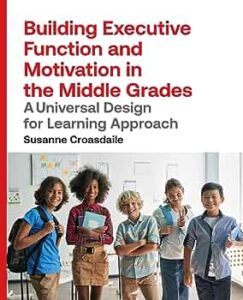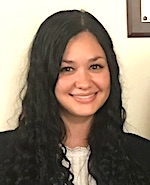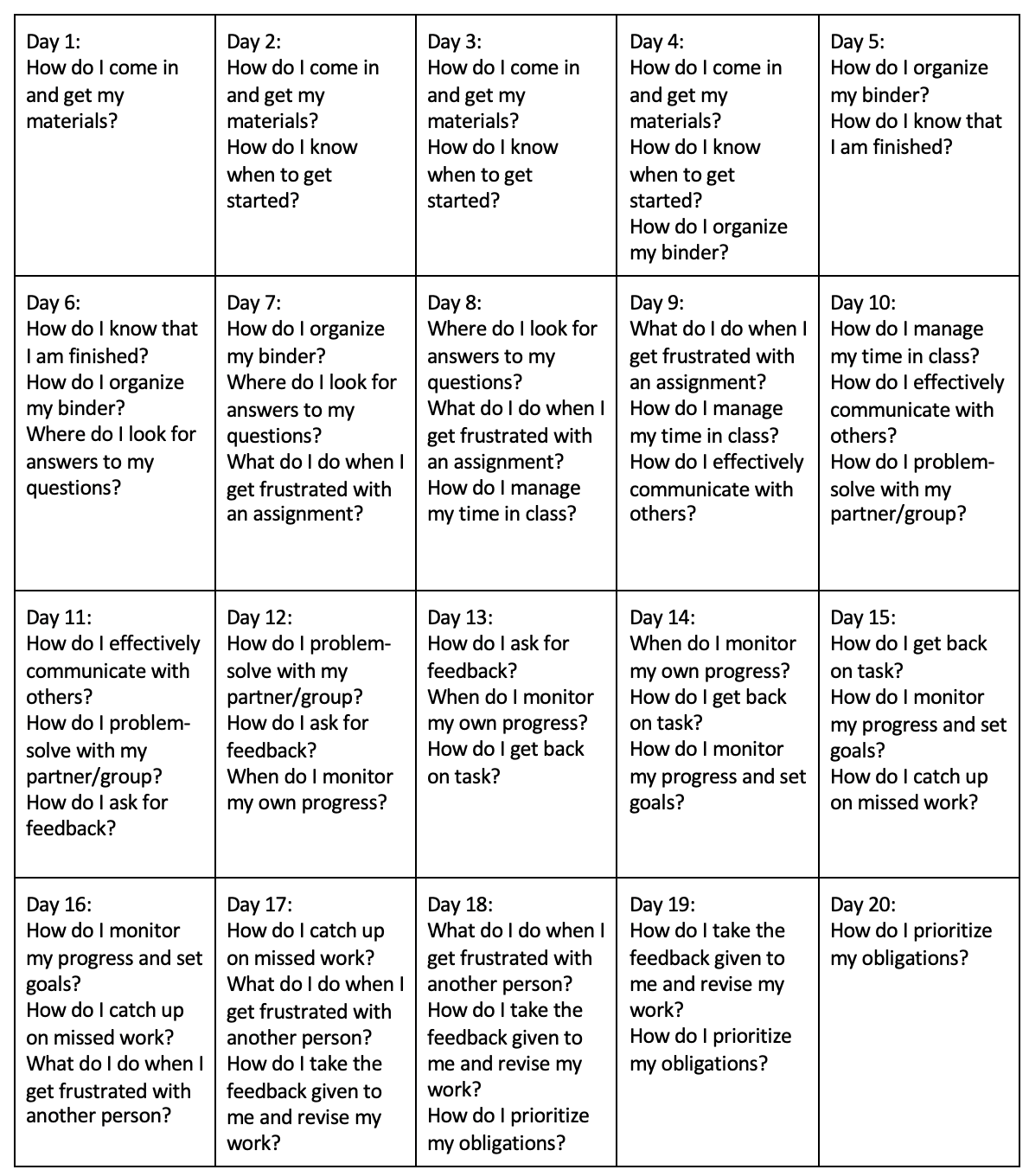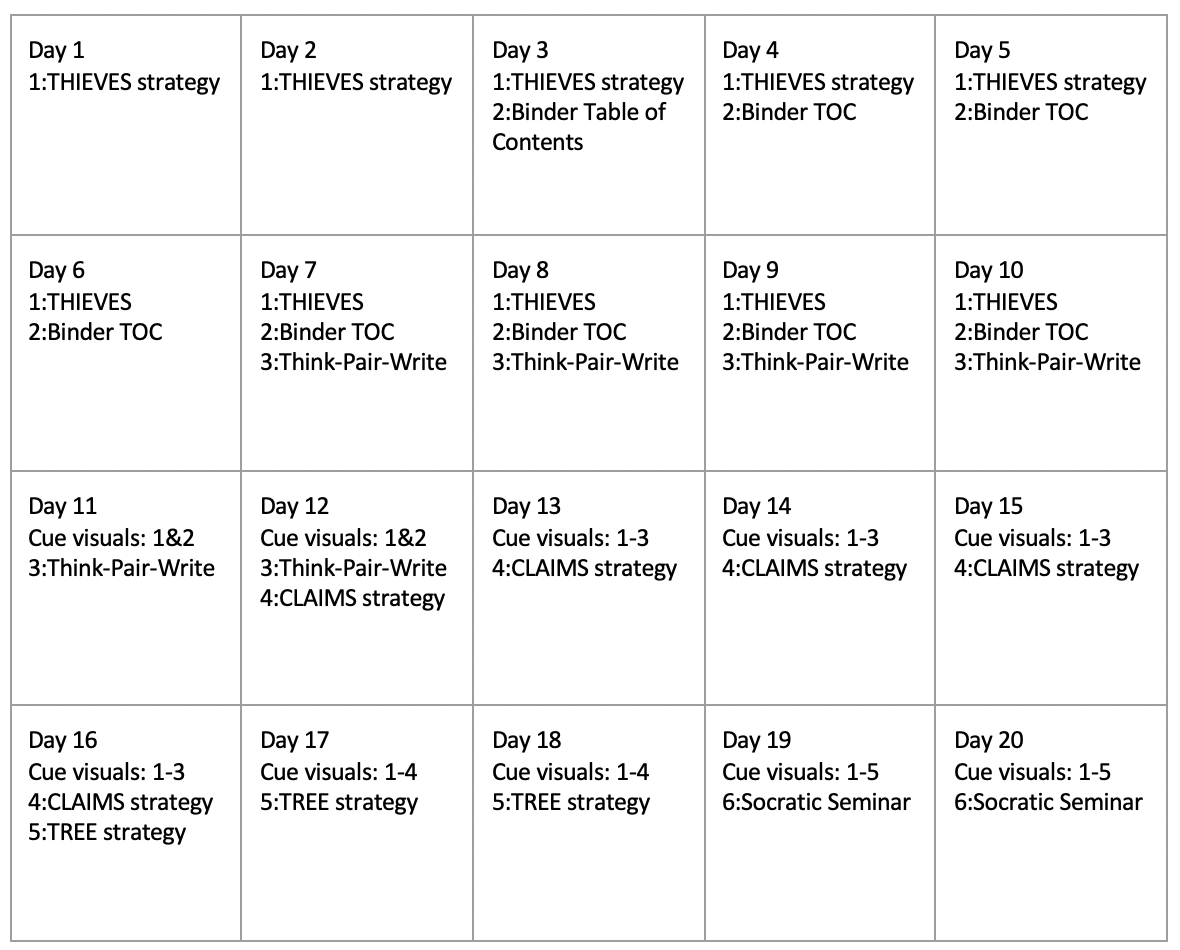Use ‘First 20 Days’ Planning to Prep Kids for Success
By Shannon Costley and Susanne Croasdaile
As the doors open and our middle school students walk back in, many of them are going to struggle and fail to win at the game of school…and some of them won’t even try.
It’s tempting to say that’s just the way it is and we can’t do anything about it. But we have a solution. It works and it takes place during the first 20 days of school.
Everyone sees the world through their own “lens,” like wearing a pair of tinted sunglasses: everything gets painted with that color! That’s a metaphor for what we call a “framework” in education.

Susanne
Educators use frameworks to help them make decisions about what to focus on and what actions to take. Universal Design for Learning (UDL) is the framework we use in our own teaching to make decisions. UDL is based in neuroscience (brain research) and has many critical components. A few, like neural pathways, will be important for this discussion about the first 20 days.
Our UDL lens makes us ask questions about the best way for us to reduce barriers to student success and build learner expertise. It’s all about planning and using data (especially our observations as teachers) to adjust.
Targeting the First 20 Days of School
For many years we have worked with grade level teams and professional learning communities (PLCs) to determine the “First 20 Days of School.” This is an actual calendar of the first four weeks of instruction that lays out each critical skill for school success and then plans instruction around those skills.
The PLC knows that there are students in the past who have struggled and failed to win at the game of school…and some who wouldn’t try. So instead of lamenting the challenges, we and our colleagues have planned the instruction students need to be successful.
We’ve included two 20-day calendar examples at the end of this article. The first one focuses on the general executive function skills and routines students will need to be successful. The second example lays out specific ELA-related routines where students will need their executive skills scaffolded using visuals, mnemonics, etc.
Both are good First 20 Days approaches because they will build positive academic habits and create the neural connections in the brain (the “routines”) that we want for our middle school learners.
The First 20 Days: Focus on Executive Skills
You might be thinking, “Hold on. We all plan instruction. What makes this kind of instruction different?” Two things: mindset and focus.
When we teach the First 20 Days, Fisher and Frey (2011) note we’re adopting a mindset that says, “They know how to do some of these things, but they don’t know how to do them for me, right here, right now.” (Take a look at their great overview of the First 20 Days.) Our mindset also leads us to focus on executive function or executive skills.
So many of the things we ask students to do in middle school test their executive function capacity. Student success depends on their working memory, or the ability to temporarily hold multiple pieces of information in mind while doing a task.
We’ve always called this “the phone number rule” – we can keep about seven things in our working memory at any given time. The real number is probably closer to four. In all actuality, if we don’t do something with information, like write it down or anchor it to existing knowledge, our working memory clears it out when the next piece of information comes along.
The First 20 Days: Scaffold Working Memory
As adults, when our “working memory gets full,” we make lists, write on our hands with a marker, send ourselves an email; use a reminder app…and we still forget or miss things!
The more we help students develop routines (and make neural pathways) the more working memory they have available to devote to the learning at hand. Think of it this way: the routines and behaviors students practice now become the neural pathways (or “habits”) that “scaffold” their working memories.
Executive skills in students are built through routines, since the neural pathways have to be created. Some students have their executive skills’ neural pathways developed in other places (like routines created by working with an uncle in a woodshop every weekend or helping mom make dinner every evening).
Other students have not had many opportunities to develop their executive skills’ neural pathways yet. So the magic for many students is to focus on routines in our classrooms.
The First 20 Days: Address Students’ Challenges
We know. You’re thinking, “But I have routines!” The question is, are they working for your students? Each year, as an individual or in your PLC, sit down and spend time focusing on whether your routines are working. Which students struggled and failed to win at the game of school last year? Which ones didn’t even try?
Now ask yourself the 5 Whys (also known as root cause analysis). Here’s an example of the 5 Whys with a typical ELA teacher concern: Why 8th grade students don’t maintain an organized notebook with their annotations and close reading notes about their assigned readings.
Q1. Why didn’t some students maintain an organized notebook?
A1. They didn’t have a notebook set up during the First 20 Days.

A2. They were showing “spectator behavior” and procrastination (or missed the set-up days due to absence).
Q3. Why are they showing “spectator behavior” and procrastination?
A3. We’re not sure, but it seems like a combination of work avoidance and a natural teenage habit to put things off.
Q4. Why are they avoiding work and putting things off?
A4. Eventually we stop asking them, and it’s not a focus anymore…avoidance succeeded!
Q5. Why do we stop asking them to organize?
A5. We are approaching this as a task we expect them to just do! and not as a routine that needs to be revisited and reinforced throughout the school year. Executive function routines (like keeping the notebook week to week) need to be progress-monitored just like academic routines that are continued throughout the school year. Make this a routine!
The 5 Whys is how we determine what routines we’ve got working and which ones need some work! Many of us decide this in our PLCs or grade level teams.
Get started with the First 20 Days
Now that you know the “why” behind the First 20 Days, here are the steps to planning:
1. Decide on critical routines to use across the year
• A routine is critical if it addresses prior problem areas or non-negotiables.
• Always include a visual (like an anchor chart) and possibly a mnemonic (like TREE or THIEVES).
2. Plan and teach the First 20 Days routines
• Reflecting on the past helps decide future routines.
• Work with others to increase the impact of the First 20 Days.
• Introduce routines with low-risk content and situations, then increase the level of risk.
3. Progress-monitor and scaffold/reteach the routines
• Use a class roster to keep track of which students are successful (and struggle) with the routines.
• Use the visuals/anchor charts to scaffold and remind students of routines and expectations.
• Reteach to specific students as necessary. Executive skills take a long time to develop – be patient and don’t give up!
As you walk back into your school this year, start off right with the First 20 Days to scaffold your students’ working memories!
TWO EXAMPLES OF 20-DAY PLANS
Figure 1. First 20 days example focusing on general executive skills.
Figure 2. First 20 days example focusing on executive skills and ELA strategies.
Go deeper into working memory with Susanne in this 12m video.
See all of Susanne Croasdaile’s
UDL articles here at MiddleWeb

Susanne Croasdaile, Ph.D., is the author of Building Executive Function and Motivation in the Middle Grades: A Universal Design for Learning Approach (CAST, July 2023). She has been a classroom teacher, instructional coach, professional developer, program specialist, systems change consultant, and associate director of curriculum and instruction for public schools in Virginia and Louisiana.

































